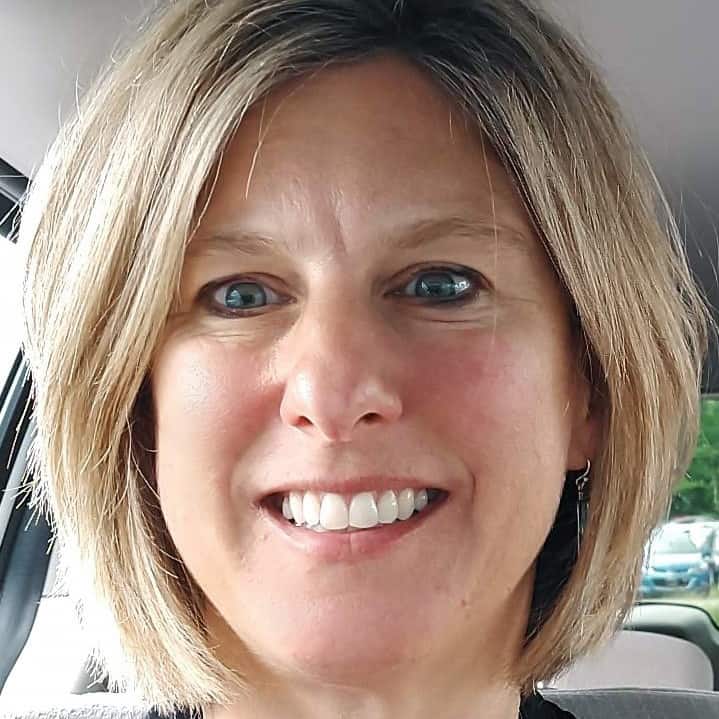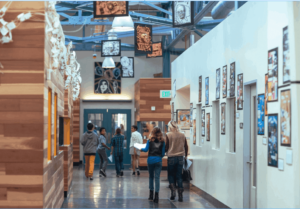Designing Projects so Students Have High Quality Project Based Learning Experiences

What types of projects might meet these criteria? A project that I recently ran in my classroom, while not perfect, provides an example for how to meet many of the criteria of HQPBL.
Authenticity
“Students work on projects that are meaningful and relevant to their culture, their lives and their future.”
Sometimes, a school’s need combined with some out-of-the-box thinking by educators combines to make an authentic project for students. In early 2017, my school installed a playground for our just-finished Early Childhood Center. Landscaping was planned for the playground area, but it would be some time before the trees would grow enough to provide ample shade for the children. Our Outdoor Education teacher had seen sail shades on other playgrounds but knew that they had to be installed at the right angle to maximize shade. She asked if any classes could investigate the specifics and design a sail shade arrangement. I volunteered my Honors Geometry classes, not because I knew exactly what to do, but because I knew that my students could use geometry to figure it out.

I organized this project using the CBL/EDP process, centering around the Big Idea of shade. My students shared what they already knew about shade and what questions they had about shade. They discussed the impact that shade (or the lack of shade) could have on local and global communities. I presented them with a challenge that would address their questions about shade: design an arrangement of sail shades for our school playground that maximized shade during peak use hours.
There were two frequent questions: did I know what the “right” design looked like, and was the school was actually going to install their shade designs? When I told them that there was not one “right” answer, one group remarked that they better get to work to understand the data so they could design the best solution. While I could not promise that a design would be installed exactly as they specified, I could guarantee that the student designs would be a major factor in informing the final layout. The buy-in was immediate — the students were itching to get to work.
Intellectual Challenge and Accomplishment

“Students learn deeply, think critically and strive for excellence.”
My students determined what information they needed to learn to be successful. Some of their more obvious questions were about budget, source of materials, cost of materials, peak use times, project restrictions and playground layout. But they also realized that they needed to learn about where the sun would be positioned during the peak use hours of each day. This was the tie-in to geometry that I had hoped they would realize. They learned about angles of elevation and azimuth, solar noon, and how the time of year and the earth’s tilt affects the maximum angle of the sun’s elevation each day. They learned to generate and read sun charts, which provide hourly elevation and azimuth angles throughout the year. And they realized that daylight savings time has to be factored in as well. They learned actual geometry content in the context of the project.

To test their solutions, students designed 3D scale models of their designs. I used AutoCAD to create and print scale drawings of the area, and students learned to use architect scales to measure distances on the drawing. I supplied wooden dowels for support posts, construction paper for the sail shades, and lots of hot glue. Students figured out how to turn the supplies into a functional 3D model. I provided protractors and lamps to simulate the sun, and students came up with a better way to use the supplies — with their cell phone flashlights as a brighter “sun” — to test their solutions.
Public Product
“Students’ work is publicly displayed, discussed and critiqued.”

Our Lower School Head, Director of Facilities, Outdoor Education teacher, and several teachers in the Early Childhood Center made time to attend student presentations and ask questions of the students. Each group presented the pros and cons of their design, discussed how their design best met the project requirements, ran a live demonstration of their design and provided the cost of their design. Students answered tough questions about the details of their design from the project’s actual stakeholders.
For several weeks after the project, all of the 3D models were displayed in our Lower School Commons. Younger students in the Lower School were encouraged to interact with the designs and use a flashlight to “test” out each model. After stakeholder deliberations, two of the group models were selected for installation in the playground. That was the ultimate public display of work! The whole class, even the students whose designs were not selected, had experienced a sense of pride in their contributions to the school.
Collaboration
“Students collaborate with other students in person or online and/or receive guidance from adult mentors and experts.”
Students worked in groups of four on this project. I helped students understand how to work together in groups, providing them with roles that encouraged active collaboration. While the students did not refer back to the roles much after the first day, most of them kept the spirit of the roles in mind as they worked.
As I reflect upon this project in context of the HQPBL Framework, I feel that I could have enhanced the student experience in this project in the following ways:
- Project Management — I allowed my student groups to manage themselves and their pace over the 2.5 week duration of the project, providing them guidance when needed. In retrospect, I could have provided them with more information about project management tools and introduced elements of design thinking.
- Reflection — My students had at least five class periods in which to build, test and revise their work. Our reflection on the project after it was complete occurred as a class discussion. I could have personalized the post-project reflection by asking each student to journal about what they learned, what went well, and what could have been improved.
The HQPBL Framework is a valuable resource for enhancing and creating CBL, PBL or any active learning student-centered projects. The suggestions and guiding questions in the framework, when carefully considered, can be used to motivate, challenge and empower students to create a solution to a problem as they learn.
For more, see:
- Introducing a Framework for High Quality Project Based Learning
- HQPBL Case Study: Thrive Public Schools
- High Quality PBL Meets Mental Health
- Scaling PBL: 3 Steps for Defining Quality With Your Staff
- HQPBL Case Study: The MET school
Stay in-the-know with all things EdTech and innovations in learning by signing up to receive the weekly Smart Update. This post includes mentions of a Getting Smart partner. For a full list of partners, affiliate organizations and all other disclosures, please see our Partner page.







sarah
we learn successfuly